April 30, 2024 | 01:16 GMT +7
April 30, 2024 | 01:16 GMT +7
Hotline: 0913.378.918
April 30, 2024 | 01:16 GMT +7
Hotline: 0913.378.918
Binh Phuoc cashew nut often hailed as the best cashew nut in Vietnam. The National Office of Intellectual Property under Ministry of Science and Technology issued a Certificate of Geographical Indication Registration for Binh Phuoc cashew nut products in 2018. This Geographical Indication apply to raw cashews, cashew nuts, and salted roasted cashews.
Binh Phuoc raw cashews are firm, smooth. The peduncle is enlarged; the shell surface is tough, smooth, glossy. The nut produces little or no sound when shaken. The thick body of a raw cashew nut ranges from 14.5mm to 18mm in diameter. The percentage of recovered nuts is at least 30% by weight. The quantity averages at 200 nuts for every kilogram; a single nut weights between 5g and 6g.
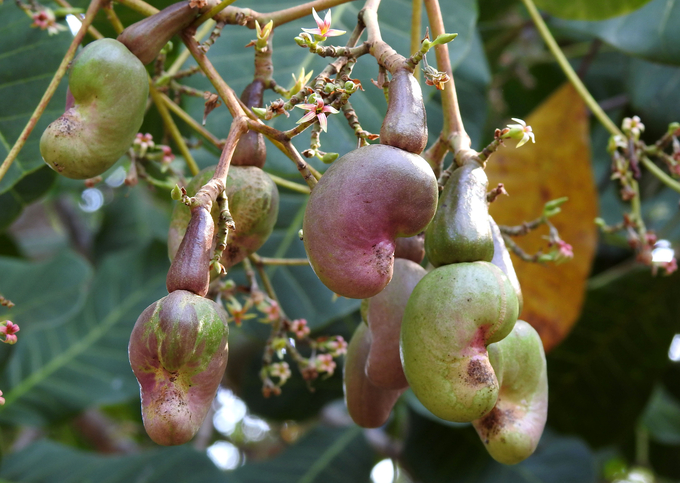
Binh Phuoc cashew. Photo: Son Trang.
Binh Phuoc cashew nuts are white, light yellow or light ivory in color. The nuts have an elongated shape, bulging at the sides, with a diameter ranging from 10.6mm to 13.1mm. The surface of nut is smooth and glossy. Binh Phuoc cashew nut has a naturally distinctive aroma, no strange smell. At least 95% of the harvested cashew nuts meet the Vietnamese TCVN 4850 standards on cashew nuts. The fat content in Binh Phuoc cashew nuts is measured at 40% by weight and the monounsaturated fat content is at least 23%.
Binh Phuoc salted roasted cashew nuts are unique in that when the shells are separated, the gap between the nut is small, and there is no salt residue. The fat content is at least 43%, the carbohydrate content is at least 23%. The high fat and carbohydrate content contributes to the sweet, aromatic and rich taste of the Binh Phuoc salted roasted cashew nut product.
Binh Phuoc cashew nuts owe their unique characteristics to the favorable geographic conditions, which is suitable for the strong growth of cashew trees. Moreover, local farmers have accumulated years of experience in cultivating and processing cashew.
Cashew trees can develop exceptionally well in Binh Phuoc because the province is located in the tropical monsoon equatorial climate where the temperature is high year-round. Additionally, the difference in air humidity between the high humidity season from May to November and the low humidity season from December to April has created beneficial ecosystem for the Binh Phuoc cashew trees.
Cashew trees have had a fifty-year history in Binh Phuoc province. Local farmers have accrued experience in cultivating, nurturing and harvesting cashews in favor of the plant characteristics and soil conditions in Binh Phuoc. Binh Phuoc people only propagate cashews through clonal methods at licensed establishments to meet the standards for varieties. The local cashew growing season falls between June and the end of July. Binh Phuoc cashew farmers have learned to utilize red-yellow soil at an altitude of less than 600 meters above sea level. These soil prerequisites prevent cashew trees from being waterlogged or salinated. The planting pit for cashew trees must be digged at least 1 month before cultivation.
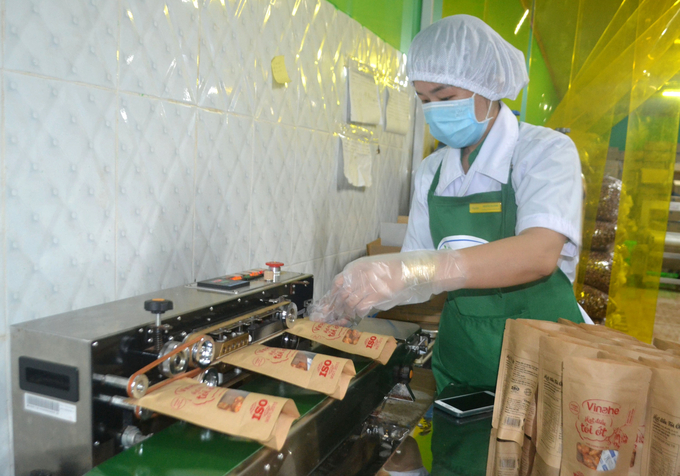
Deeply processed cashew nuts being packaged in a factory in Binh Phuoc. Photo: Son Trang.
However, Binh Phuoc province faces challenges in the promotion of Binh Phuoc cashew nuts.
Mr. Vu Thai Son, Chairman of Binh Phuoc Cashew Association, reported that nine businesses have earned Geographical Indications for Binh Phuoc cashew nut. However, these businesses have not developed market share for these certified products, thereby failing to engage in effective replication and promotion.
On the other hand, Vietnam's cashews are facing increasing competition from Cambodia, Ivory Coast, etc. These products are competing in terms of quality uniformity, price, and various international standards such as Geographical Indication, traceability, GlobalGap, Organic, Fairtrade, growing area code, packing base code and so on.
Mr. Vu Thai Son said that Binh Phuoc needs to review and standardize the granting of Geographical Indication certificate for Binh Phuoc Cashew. He emphasized that although this is not a major solution, it is applied globally.
According to Mr. Vu Thai Son, due to increasingly competitive markets, cashew growing countries as well as the largest cashew nut importing countries have agreed on the importance of Geographical Indication. It is an indispensable tool for international competition. The government must fully utilize its characteristics in the strategy of expanding export markets to other partner countries.
Translated by Nguyen Hai Long

(VAN) Large-scale irrigation projects in the Mekong Delta have safeguarded a beneficiary area spanning more than 1 million hectares, significantly mitigating damage caused by drought and saltwater intrusion.

(VAN) Residents along the south bank of the Hau River are anticipating the Rach Mop lock by the end of 2024, along with projects to fortify the irrigation system to prevent saltwater intrusion.
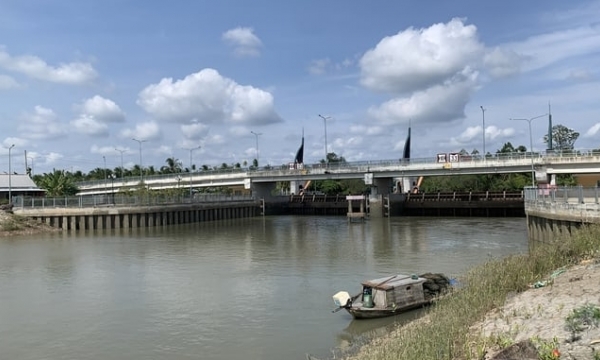
(VAN) The Bong Bot - Tan Dinh sluice delivers fresh water to meet the production demands of thousands residing in Tra Vinh province's coastal areas.
/2024/04/26/0500-3-135847_403.jpg)
(VAN) According to Dr. Dao The Anh, if indigenous varieties that are highly nutritious and adapt to climate change can be developed, the community will greatly benefit.
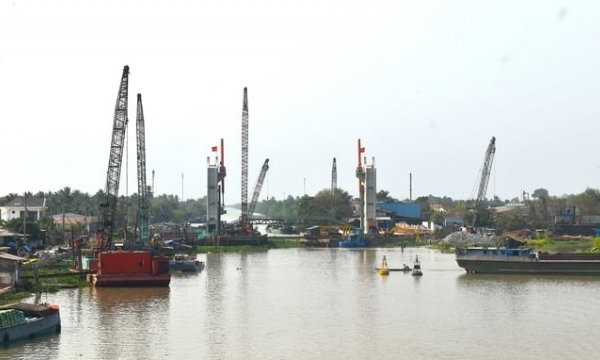
(VAN) The Nguyen Tan Thanh sluice is crucial in preventing salinity and storing freshwater to meet the daily needs of over 1.1 million residents in Tien Giang and Long An provinces.
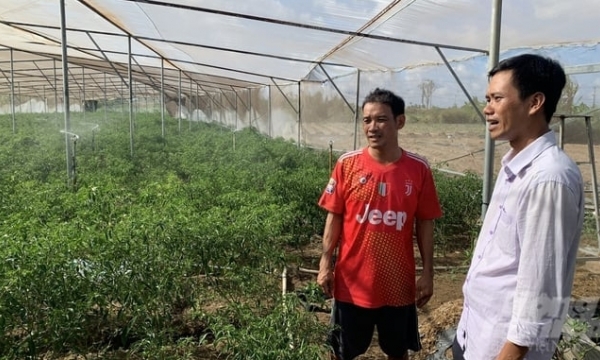
(VAN) The project, sponsored by the European Union, is implemented in Dong Thap, Kien Giang, and Tra Vinh provinces, with a total funding of 4.2 million Euros.
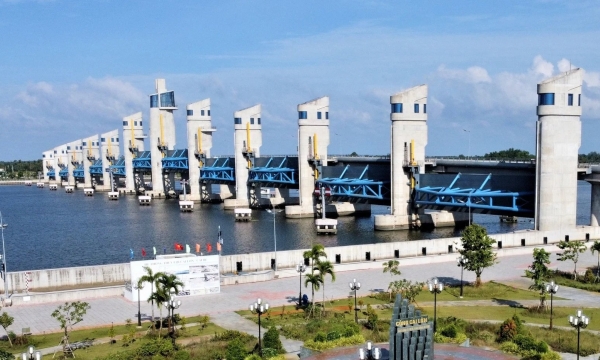
(VAN) In the heart of the Mekong Delta, the Cai Lon and Cai Be sluice gates act as guardians, halting the incursion of salty tides deep into the inland fields and managing freshwater resource distribution.